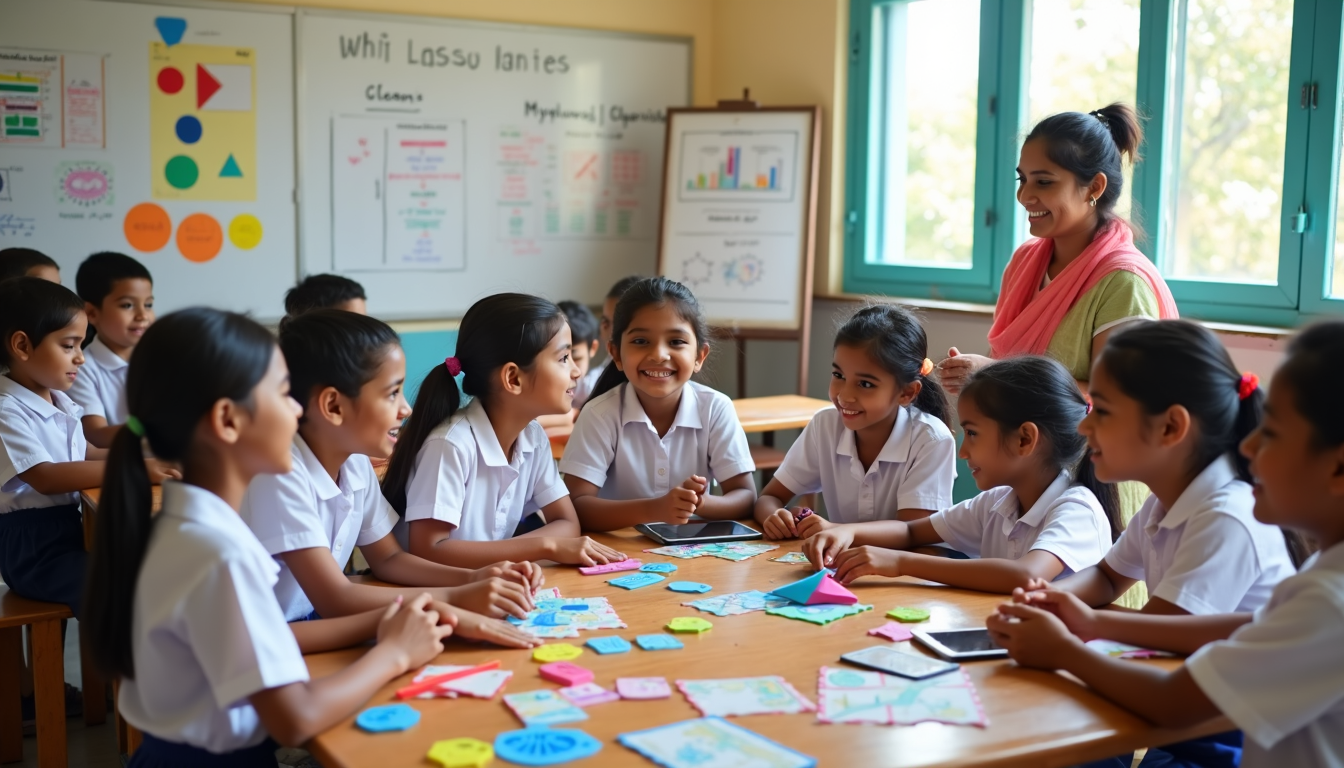Making Math Fun for Grades 1-8: Fresh Ideas for the Classroom

Math often feels like a chore for students in grades 1 through 8. Many educators see lessons stuck in a cycle of repetitive, procedural tasks that seem dull or even outdated. Students, especially in middle school, struggle to see how math connects to their lives, grinding through concepts like fractions or early algebra without understanding the “why.” With math performance slipping and a push to rethink rigid curriculums, it’s time to bring excitement and relevance to the classroom. Here are simple, engaging ways to make math irresistible for young learners, tailored for Tailwnd.com readers.
1. Tie Math to Their World
Show kids how math lives in their everyday lives with hands-on projects:
- Grades 1-3: Supermarket Math - Have students “shop” in a pretend store, adding prices or counting change to practice basic operations.
- Grades 4-6: Build a Mini-City - Use shapes and measurements to design a small town, teaching geometry through creativity.
- Grades 7-8: Plan a Party - Budget for food and decorations, using fractions, decimals, and percentages to make planning real and fun.
- Real-Life Data - Analyze sports scores, weather patterns, or favorite snacks’ nutritional info to teach graphing and basic statistics.
Bring in stories of people using math in cool jobs, like video game designers or bakers, to spark curiosity about future possibilities.
2. Get Kids Moving and Talking
Ditch the silent worksheets and make math active:
- Math Treasure Hunts (Grades 1-4): Hide number clues around the classroom for students to solve in teams, practicing addition or multiplication.
- Group Challenges (Grades 5-8): Solve puzzles together on big whiteboards, encouraging kids to share ideas and try different approaches.
- Math in Motion (All Grades): Measure jumps to teach length or use body movements to form shapes, making geometry physical and fun.
These activities build teamwork and show kids that math isn’t just about getting the right answer—it’s about thinking creatively.
3. Use Games and Technology
Kids love tech and games, so use them to make math click:
- Apps and Online Tools (All Grades): Platforms like Prodigy or Kahoot! turn math into interactive games with rewards, keeping students hooked.
- Virtual Manipulatives (Grades 1-5): Use digital blocks or shapes on sites like Math Playground to help kids visualize numbers and patterns.
- Graphing Fun (Grades 6-8): Tools like Desmos let students play with graphs, seeing how numbers create patterns or pictures.
- Math Story Videos (All Grades): Short clips explaining concepts or showing math in action (like building a skateboard ramp) can make lessons lively.
Games and tech make practice feel like play, boosting confidence and engagement.
4. Focus on Understanding, Not Just Answers
Help kids see the “why” behind math instead of memorizing steps:
- Visual Learning (Grades 1-4): Use objects like counters or drawings to show what addition or fractions really mean.
- Ask “Why?” (Grades 5-8): When teaching formulas, like the area of a rectangle, show how it works with real examples, like measuring a desk.
- Celebrate Mistakes (All Grades): Create a classroom where wrong answers lead to discussions, helping kids learn without fear.
- Open-Ended Questions (Grades 6-8): Ask, “How many ways can you make 24?” to encourage creative thinking and exploration.
This approach builds confidence and helps kids love the process of solving problems.
5. Make Math a Story
Turn math into an adventure to capture young imaginations:
- Math Mysteries (Grades 1-5): Create stories where students solve clues to “save the day,” using basic operations or patterns.
- Escape Rooms (Grades 6-8): Design simple math-based puzzles to “unlock” the next step, blending teamwork and problem-solving.
- Math Art (All Grades): Draw patterns or create crafts using shapes, linking math to creativity and beauty.
These activities make math feel like a game, not a task, keeping students eager to dive in.
6. Rethink the Curriculum
Break free from rigid lesson plans to keep math fresh:
- Mix It Up (Grades 5-8): Blend topics like fractions, geometry, and data each year to show how they connect, rather than teaching them separately.
- Focus on Life Skills (Grades 6-8): Teach practical math, like budgeting or measuring, alongside traditional topics to show real-world value.
- Let Kids Choose (All Grades): Offer choices in projects, like designing a playground or analyzing a favorite game, to give students ownership.
By making math hands-on, relevant, and fun, educators can transform classrooms into places where students from grades 1 to 8 discover the joy of numbers. Let’s move past the slump and inspire the next generation of problem-solvers!





